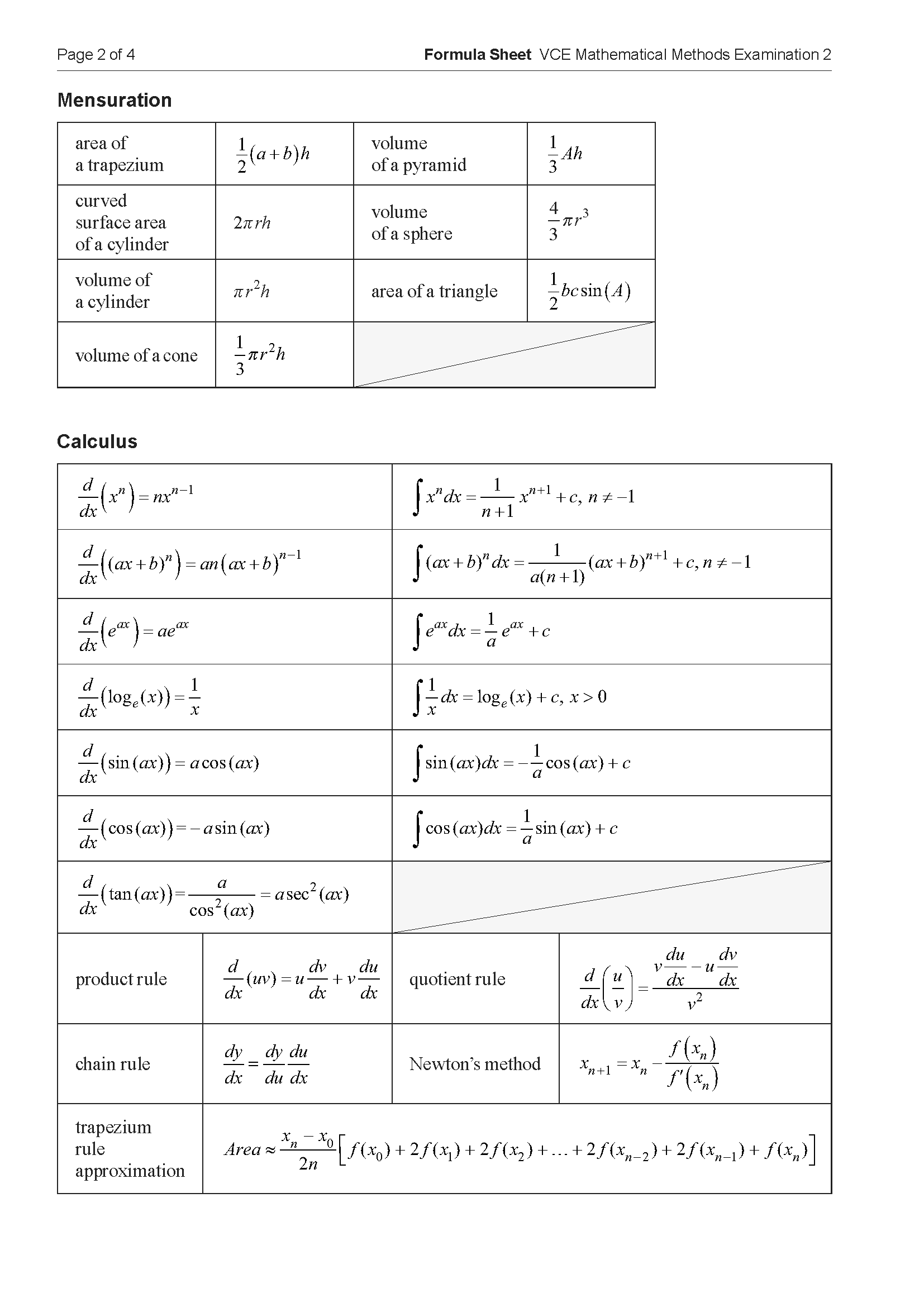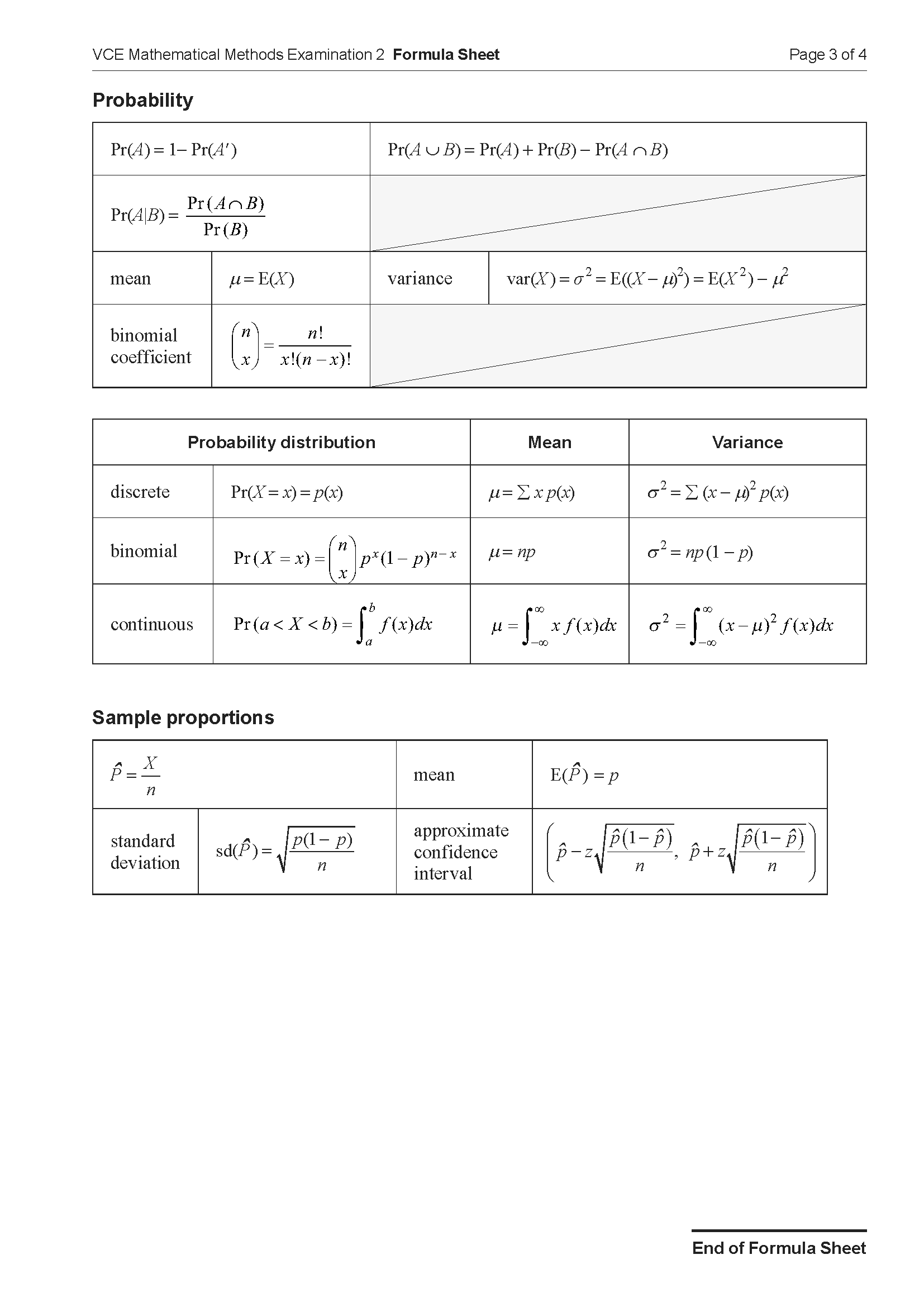VCE Methods Probability Application Task 5
Number of marks: 15
Reading time: 3 minutes
Writing time: 22 minutes
Section B – Calculator Allowed
Instructions
• Answer all questions in the spaces provided.
• Write your responses in English.
• In questions where a numerical answer is required, an exact value must be given unless otherwise specified.
• In questions where more than one mark is available, appropriate working must be shown.
• Unless otherwise indicated, the diagrams in this book are not drawn to scale.
At an airport, luggage is weighed before it is checked in.
The mass of each piece of luggage, in kilograms, is modelled by a continuous random variable \( X \), whose probability density function is
\[ f(x) = \begin{cases} \frac{1}{67500} x^2(30 - x), & 0 \leq x \leq 30 \\ 0, & \text{elsewhere} \end{cases} \]
A piece of luggage is labelled as heavy if its mass exceeds 23 kg.
a. Write a definite integral which gives the probability that a piece of luggage is labelled as heavy. 1 mark
b.
i. Find the mean of \( X \). 1 mark
ii. Find the standard deviation of \( X \). 2 marks
iii. Given that the mass of a piece of luggage is more than the mean, find the probability that it is labelled as heavy, correct to three decimal places. 2 marks
Use the following information to answer parts c and d of this question.
Of the travellers flying from the airport
- • 10% do not check in any luggage
- • 40% check in exactly one piece of luggage
- • 50% check in exactly two pieces of luggage
Assume that the mass of each piece of luggage is independent of the number of pieces checked in by each traveller.
Use the value of 0.234 for the probability that a piece of luggage is labelled as heavy.
c. Let \( W \) be the discrete random variable that represents the number of pieces of luggage labelled as heavy checked in by each traveller.
i. Show that \( \Pr(W = 2) = 0.027 \), correct to three decimal places. 1 mark
ii. Complete the table below for the probability distribution \( W \), correct to three decimal places. 2 marks
\[ \begin{array}{|c|c|c|c|} \hline w & 0 & 1 & 2 \\ \hline \Pr(W = w) & & & 0.027 \\ \hline \end{array} \]
d. On a particular day, a random sample of 35 pieces of luggage was selected at the airport.
Let \( \hat{P} \) be the random variable that represents the proportion of luggage labelled as heavy in random samples of 35.
i. Find \( \Pr(\hat{P} > 0.2) \), correct to three decimal places. 2 marks
ii. Determine the probability that \( \hat{P} \) lies within one standard deviation of its mean, correct to three decimal places. Do not use a normal approximation. 2 marks
e.
i. In one random sample of 50 pieces of luggage, 10 are labelled as heavy. Use this sample to find an approximate 90% confidence interval for \( p \), the population proportion of luggage labelled as heavy, correct to three decimal places. 1 mark
ii. A second random sample of 50 pieces of luggage is selected. Using this sample, the approximate 90% confidence interval for \( p \), the population proportion of luggage labelled as heavy, is wider than the one obtained above in part e.i.
State the minimum and maximum possible number of pieces of luggage labelled as heavy in the second sample. 1 mark
End of examination questions
VCE is a registered trademark of the VCAA. The VCAA does not endorse or make any warranties regarding this study resource. Past VCE exams and related content can be accessed directly at www.vcaa.vic.edu.au

